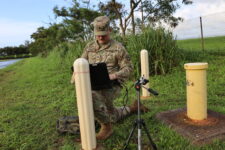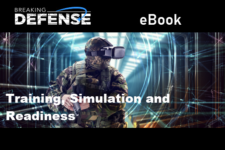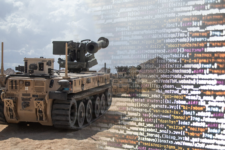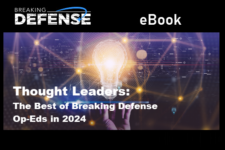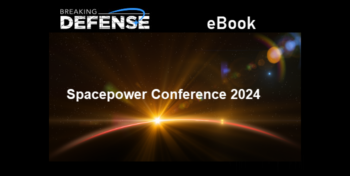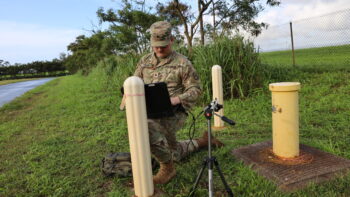
Mr. John Sherman, Acting Department of Defense Chief Information Officer participates in a virtual panel with Billington Cybersecurity at the Pentagon, April 15, 2021 (DoD photo by Chad J. McNeeley)
WASHINGTON: The Pentagon’s information and artificial intelligence chiefs are crafting a new digital workforce strategy that would recruit from a more diverse pool of candidates and lure them to government work in part by offering training and experience that would be valuable after their government service is up.
The office of DoD’s chief information officer started crafting the strategy last year, looking at how the department can attract digital and cyber talent. Back then, it was just focused on the cyber element, CIO John Sherman said June 8 during the DoD Data and AI Symposium.
“How do we think differently about this?” Sherman said. “How do we leverage the authorities that we already have at our disposal that Congress has already given us?…But then, how do we do things like increase diversity, recruit in different areas, think really hard about educational baselines — are we excluding folks that could contribute here?”
Sherman added he will work in coordination with Craig Martell, the Pentagon’s chief data and AI officer, to develop the strategy because it will be “critical” to getting after the talent the newly stood up office will need.
“I think that if we do this right, we can actually create a diversity pipeline for Silicon Valley, and they will be pounding down the door to get to that,” Martell said. “So I think this is a really key initiative that we need to look into.”
Martell comes from the private sector himself. Prior to recently taking the CDAO job, he worked as head of machine learning for ride share platform Lyft, led the machine learning team at Dropbox and was in responsible for several AI teams at LinkedIn.
RELATED: Lyft Exec Craig Martell Tapped As Pentagon’s AI Chief: Exclusive Interview
“I think a piece we really need to think about is to make someone’s time in government valuable to their time in industry,” Martell said during the symposium. “So when they come to government, we have to give them the right skills, we have to give them the right experience so that when they’re done Silicon Valley or industry in general is willing to grab them, right?
“I’m not quite sure now that when I leave government, people aren’t going to say…you’re going to be stale and you’re not going to be on the cutting edge,” he continued. “We want to create an environment where people will come to work for us. When they’re done, many doors have opened for them to get back into industry.”
Neither Sherman or Martell said when the strategy is anticipated to be released or how far it is in development.
Speaking at a different panel at the symposium, Deputy Defense Secretary Kathleen Hicks said any strategy the US has right now would benefit from input from a CDAO, including the National Defense Strategy.
The NDS is “very much aligned to what we’re trying to achieve with the CDAO stand up and of course what the broader community is trying to achieve across all the digital and data spaces,” Hicks said.
She added the Pentagon needs to bring in world-class AI talent and “be able to access that talent” to help build out the AI enterprise the department needs.
The Pentagon’s fiscal 2023 budget request reflects the department’s increased focus in the AI area. Budget documents show several amounts of funding requested for the CDAO office, including $273.34 million for AI/ML learning and validation, $33.95 million in intelligence support and $76.79 million for its AI and Data Accelerator effort.
Killer Apps: 5 stories highlight quiet progress on military AI and CJADC2
While combat has seen a drone revolution, the US has made subtle but real advances in applying AI to military planning, intelligence, and “all domain” command and control.

